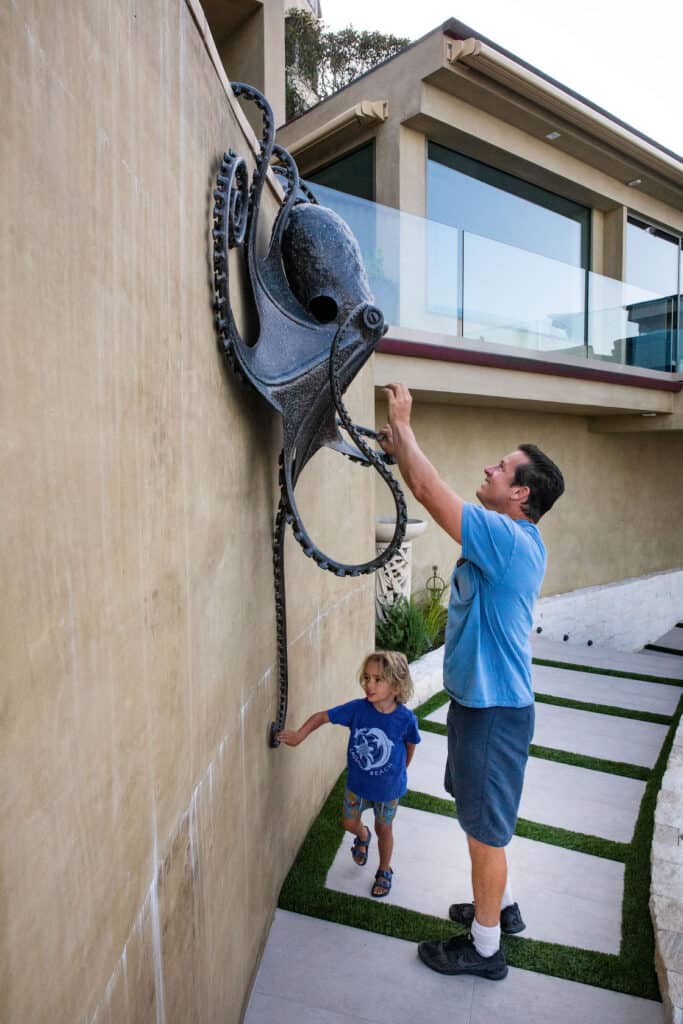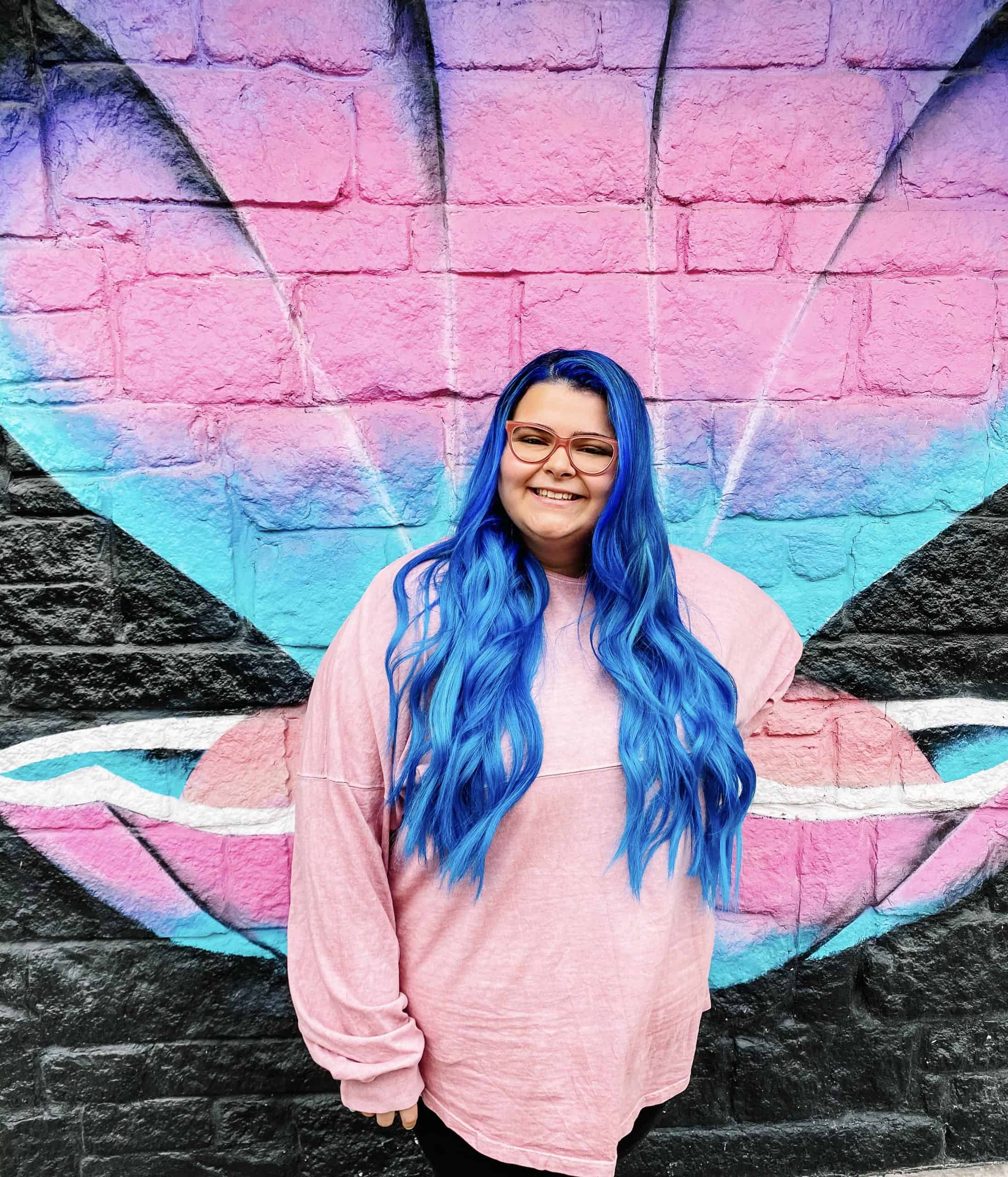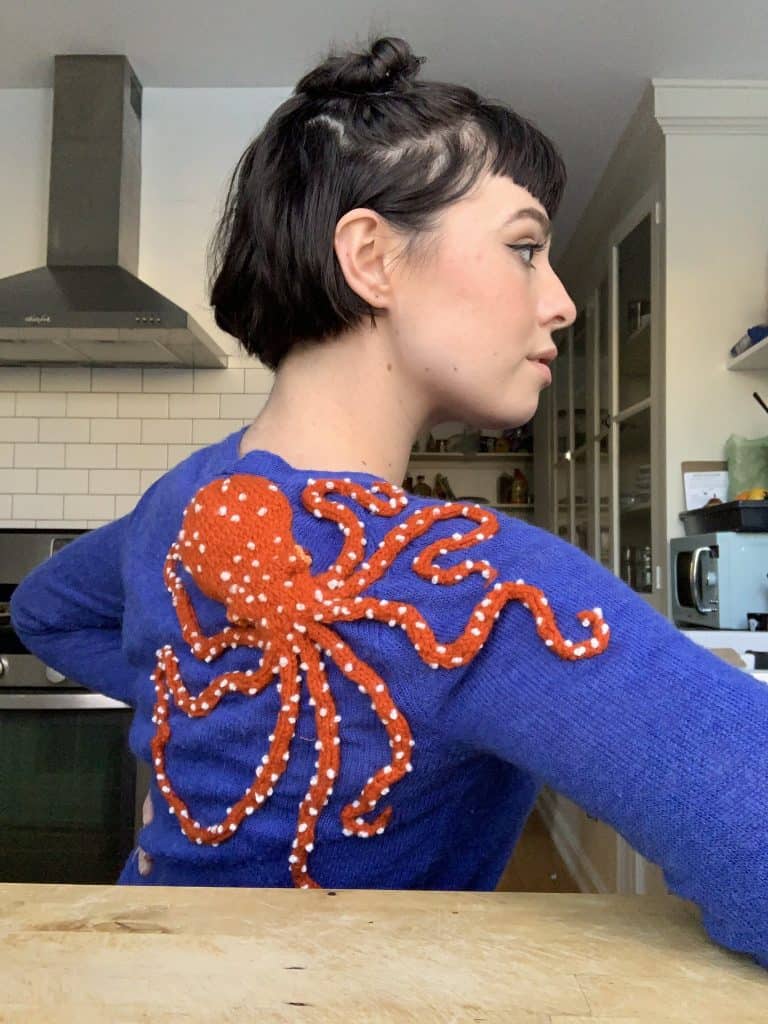‘Artist Spotlight’ Of The Week: Casey Parlette
Howdy Nation! In today’s post, we are going to be featuring our ‘Artist Spotlight’ of the week: Casey Parlette. A naturalist at heart, Casey credits his adventures and anthropological studies to inspire and influence his octopus art. He will be showing us how he made a large metal octopus as well as a wooden version!

Meet Casey Parlette!
Growing up in Southern California, Casey Parlette spent a lot of time among the local wildlife as he explored the nearby hills and ocean. Inspired by the fish, birds, and plants he saw, he began sculpting at a young age.
After graduating from UCLA with a degree in anthropology, Casey was recruited to work as a commercial diver and a career ocean lifeguard.

He also has operated underwater cameras in exotic seas for the award-winning TV series Inside Sportfishing and adventured into remote areas of the world!
On top of all that, he’s an artist!
In today’s post, we will be showing some of Casey’s art pieces. Let’s check them out!

What draws you in or fascinates you the most about octopuses? When did this start for you?
“Ever since I was a kid, I have been fascinated by the way octopuses move and change their color in different environments.
I used to go visit tide pools often when I was a kid, and I’d almost always find an octopus on my adventures!
Spending all that time feeding them and watching them really cemented the octopus as one of my favorite ocean creatures.”

OctoNation members love knowing how long your work takes you to complete… Can you describe the process?
“When I’m trying to portray an octopus, there are two things I think about:
- The way they move over an environment they flow and blend into that environment
- When an octopus moves it sort of unrolls over that environment.
It generally takes a long time to complete an octopus piece, no matter the size or materials used.”
“I’ve done a number of different octopuses and cephalopods and, depending on the overall look I want for the piece, I draw from a lot of different metals and wood materials.
Wood has a soul to it, along with swirls and spots that really reflect the look of an octopus, so I like to use wood in that aspect.”

“For the large outdoor octopus pieces, I like to use bronze! I like the textures and the look of a forged welded piece, so the tentacles are all made of forged bronze and I bend them to get the shape I want.”
“Then, I weld the individual suction cups one by one, to give me more intimate control of the flow of the piece. This captures the way that the octopus interacts with the surface that I’m building on, whether that’s a rock or a structure.”

“The head and the webbing is all shaped out of a bronze sheet that I texture through hammering!”

Was this modeled after a specific octopus species? Did you use any references?
“Over time, I’ve done many different cephalopod and octopus pieces modeled after various species. My reference material is my experience out in the wild observing their movement.”






What materials are used in your work?
“I use Bronze and various species of wood including:
- Manzanita burl
- Maple burl
- Curly redwood”

Who (or what) are your biggest influences?
“I’ve always been inspired by nature!”

When do you feel the most creative?
“I’m usually most creative when I’m inspired by a new project that has some exciting elements to it that provides me with new challenges.”

How do you know when a piece is finished?
“With something like an octopus that has so many details, it’s hard to know when it’s finished. But, at a certain point, the flow comes together and it just looks right!”


What’s the best website for people to discover your work?
“You can check out my website caseyparlette.com.”

🐙 Octopus Fun Fact
For eight months, Casey lived in the Peruvian Amazon where he discovered a previously unknown species of fish, which has been officially classified as Rivulus Parlettei! (named after his last name, Parlette– isn’t that cool? #LifeGoals)

Thank You For Joining Us For Artist Spotlight!
First, we want to give a big thank you to Casey Parlette for allowing us to showcase his work on OctoNation. To continue supporting Casey and his wildlife sculpture, make sure to follow them on Instagram @caseyparlettesculpture, on Facebook, and on Youtube.

If you are interested in commissioning a piece from them, fill out this form.
If you want to educate yourself some more about all sorts of different cephalopods, take a look at our encyclopedia. Or, what we call it, our Octopedia!
Connect with other octopus lovers via the OctoNation Facebook group, OctopusFanClub.com! Make sure to follow us on Facebook and Instagram to keep up to date with the conservation, education, and ongoing research of cephalopods.
More Posts To Read:
- Do Octopus Bite?
- Does Octlantis Exist?
- “How The Octopus Lost Its Shell” (Octopus Comic)
- What’s The Difference Between Cuttlefish vs. Octopus?
- Breaking News – There are now THREE new species of Nautilus!

Vee is the blog manager here at OctoNation. Her love and knowledge for all things cephalopods has grown immensely since joining the OctoNation team- and continues to grow daily!
Vee uses her skills of writing, editing, and brainstorming to help create fun, yet educational posts about cephalopods- Something everyone can read and enjoy! As someone who spent the better part of her childhood near the ocean in Miami, Florida, she grew up learning to appreciate all sea life. Her love for the sea inspired her to do something daring- she dyed her hair blue!






